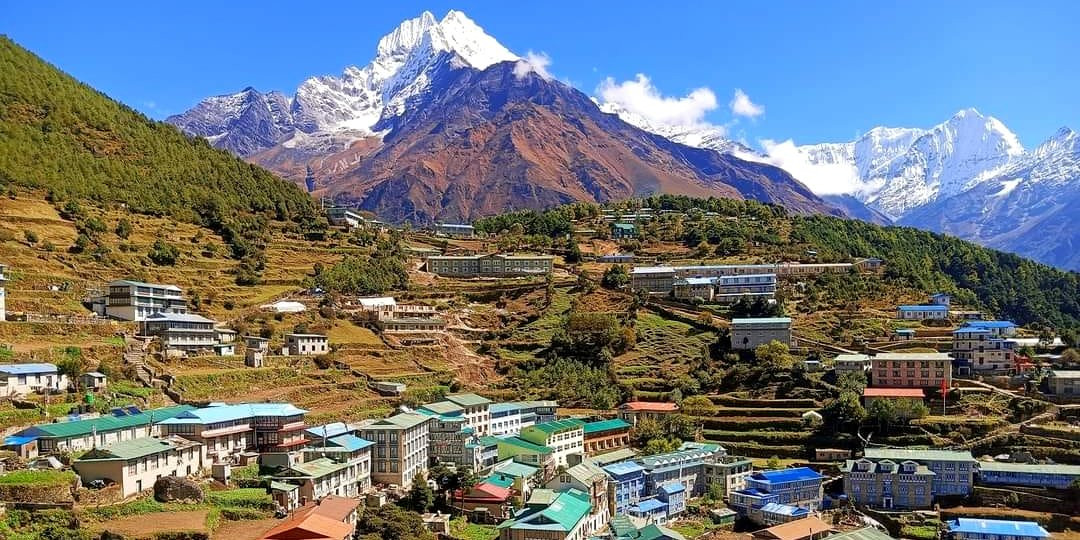Trek to Everest Base Camp
Trekking to Everest Base Camp is one of the most iconic and sought-after adventures in Nepal. This trek not only challenges your physical limits but also offers an up-close view of the world’s highest peak, Mount Everest, known locally as Sagarmatha. Here’s a detailed look at what the trek to Everest Base Camp entails:
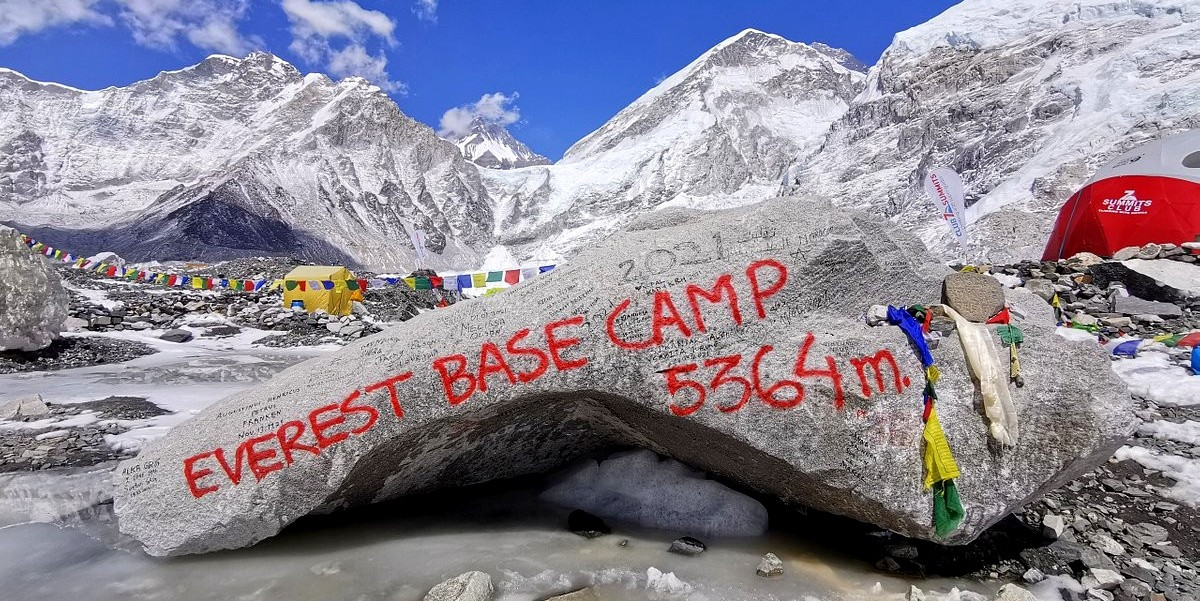
Overview
-
Duration: Typically 12-14 days
-
Start/End Point: The trek usually starts and ends at Lukla, which is a short flight from Kathmandu.
-
Altitude: Reaches up to 5,364 meters (17,598 feet) at Base Camp
-
Difficulty: Moderate to challenging, suitable for reasonably fit individuals with some trekking experience
Route Highlights
-
Lukla: The gateway to Everest, this small town is where most treks begin after a scenic flight from Kathmandu.
-
Namche Bazaar: Known as the gateway to the high Himalayas and crucial for acclimatization, this bustling Sherpa town offers panoramic views and has plenty of shops and cafes.
-
Tengboche Monastery: Situated at 3,867 meters, it provides spectacular views of Everest, Ama Dablam, and other peaks. The monastery is a spiritual center in the Khumbu region.
-
Dingboche and Lobuche: Small settlements that provide critical acclimatization stops with opportunities to explore nearby glaciers and memorials.
-
Gorak Shep: The last stop before reaching Everest Base Camp. The climb to Kala Patthar from here offers the best views of Everest.
Key Experiences
-
Scenic Views: The trek provides breathtaking views of some of the world's highest peaks including Everest, Lhotse, Nuptse, and Ama Dablam.
-
Sherpa Culture: Experience the rich cultural heritage of the Sherpa people, visit monasteries, and learn about their traditions and ties to the mountains.
-
Flora and Fauna: The trail passes through Sagarmatha National Park, home to unique wildlife including the Himalayan tahr, snow leopard, and colorful pheasants.
-
Kala Patthar: Climbing this peak near Gorak Shep provides the best viewpoint to see Everest as it offers a spectacular vantage point of the south face of Everest and the surrounding peaks.
Preparation Tips
-
Physical Preparation: It is essential to be in good physical condition. Engage in cardiovascular activities such as hiking, running, and strength training months before the trek.
-
Gear: Proper gear is crucial. This includes thermal clothing, a good-quality sleeping bag, trekking boots, and sunglasses.
-
Acclimatization: Take time to acclimatize to the high altitude. Follow a walk-high, sleep-low routine whenever possible.
-
Travel Insurance: Ensure you have insurance that covers high-altitude trekking and possible helicopter evacuation.
At Relax Getaways, we ensure that your journey to Everest Base Camp is memorable and hassle-free. Our experienced guides and porters are well-acquainted with the local terrain and culture, and we prioritize your safety and comfort throughout the trek. Join us to experience one of the Ultimate Bucket List Experiences in Nepal and cherish memories of the majestic Himalayas for a lifetime.
Cultural Tours in Kathmandu Valley
Cultural tours in Kathmandu Valley offer an immersive journey into the rich tapestry of history, architecture, and spirituality that defines this fascinating region. The valley, encircled by green mountain walls and mighty rivers, stands as the cultural heart of Nepal. It is home to an exceptional array of temples, palaces, and ancient towns that showcase centuries of Nepali art, religion, and history. Here's what you can expect from a cultural tour in the Kathmandu Valley with Relax Getaways:
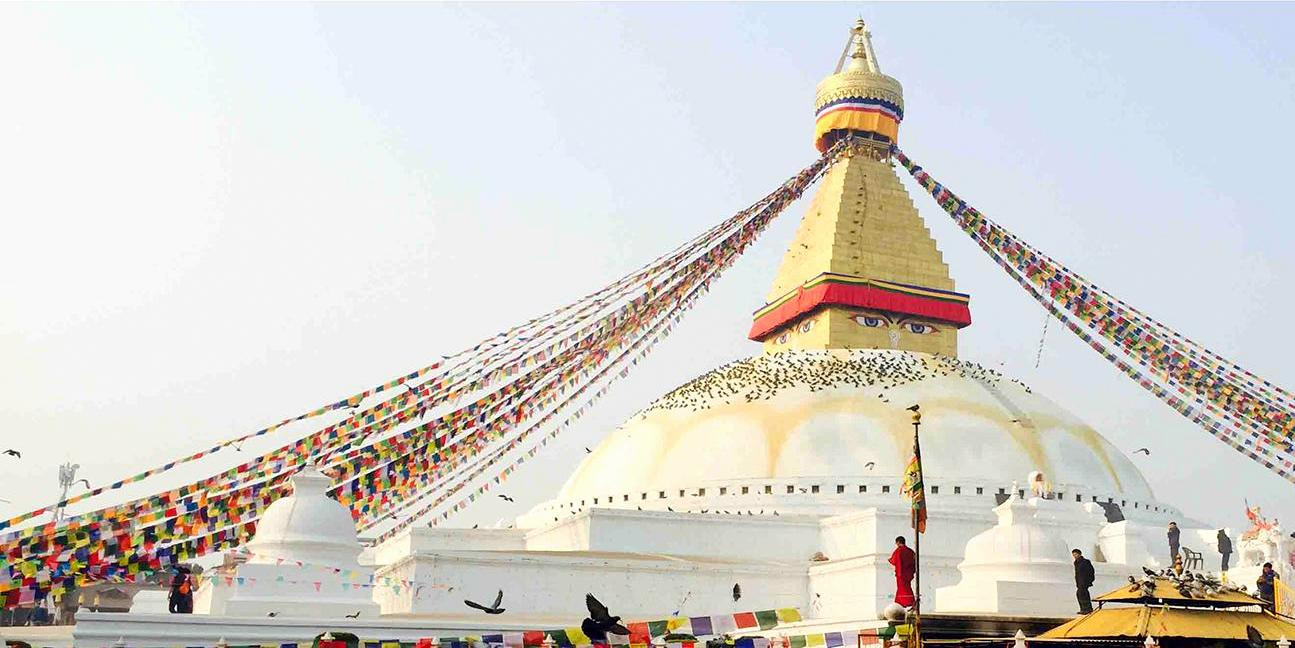
Highlights of Kathmandu Valley Cultural Tours
Kathmandu Durbar Square
-
Description: Located in the heart of old Kathmandu, this historical site includes palaces, courtyards, and temples built between the 12th and 18th centuries. It serves as a museum of the city's architectural traditions.
-
Significance: It's a UNESCO World Heritage Site, known for its exquisite craftsmanship and as the social, religious, and urban focal point of the city.
Patan Durbar Square
-
Description: Situated in Lalitpur, Patan Durbar Square is famed for its artistic heritage. It is arguably the most photogenic among the three durbar squares.
-
Significance: The square is surrounded by ancient buildings, temples, and shrines noted for their exquisite carvings and architectural beauty.
Bhaktapur Durbar Square
-
Description: This is a living representation of how the entire Kathmandu Valley would have looked during medieval times. Bhaktapur has preserved its ancient character more than the other cities.
-
Significance: Known for its pottery and weaving industries, Bhaktapur is also famous for the Nyatapola Temple, Bhairab Nath Temple, and the Palace of Fifty-Five Windows.
Swayambhunath Stupa (Monkey Temple)
-
Description: Perched atop a hill on the western edge of Kathmandu, it is one of the most ancient and holy sites in Nepal.
-
Significance: The stupa is a symbol of peace and offers a panoramic view of Kathmandu city. It is also known for the monkeys that inhabit parts of the temple.
Pashupatinath Temple
-
Description: This sacred Hindu temple is located on the banks of the Bagmati River and is dedicated to Lord Shiva.
-
Significance: Pashupatinath serves as the seat of Nepal’s national deity, Lord Pashupatinath. This temple complex is on the UNESCO World Heritage Sites list and is a prominent cremation site.
Boudhanath Stupa
-
Description: One of the largest spherical stupas in Nepal and the world, it stands as a beacon of Buddhist faith and heritage.
-
Significance: The area surrounding the stupa is a vital cultural and religious center for Buddhism in Kathmandu.
Embark on a cultural journey with Relax Getaways and explore the living museum that is Kathmandu Valley. Discover ancient temples, vibrant marketplaces, and artistic treasures, all of which contribute to making this one of the Must-Do Experiences in Nepal.
Wildlife Safari in Chitwan National Park
Embark on a thrilling wildlife safari in Chitwan National Park, one of the most popular destinations for wildlife enthusiasts visiting Nepal. This UNESCO World Heritage site is renowned for its biodiversity and is home to some of the most unique wildlife in Asia. With Relax Getaways, explore the dense forests of Chitwan on an adventure that promises close encounters with exotic animals and an in-depth understanding of the park's natural environment.
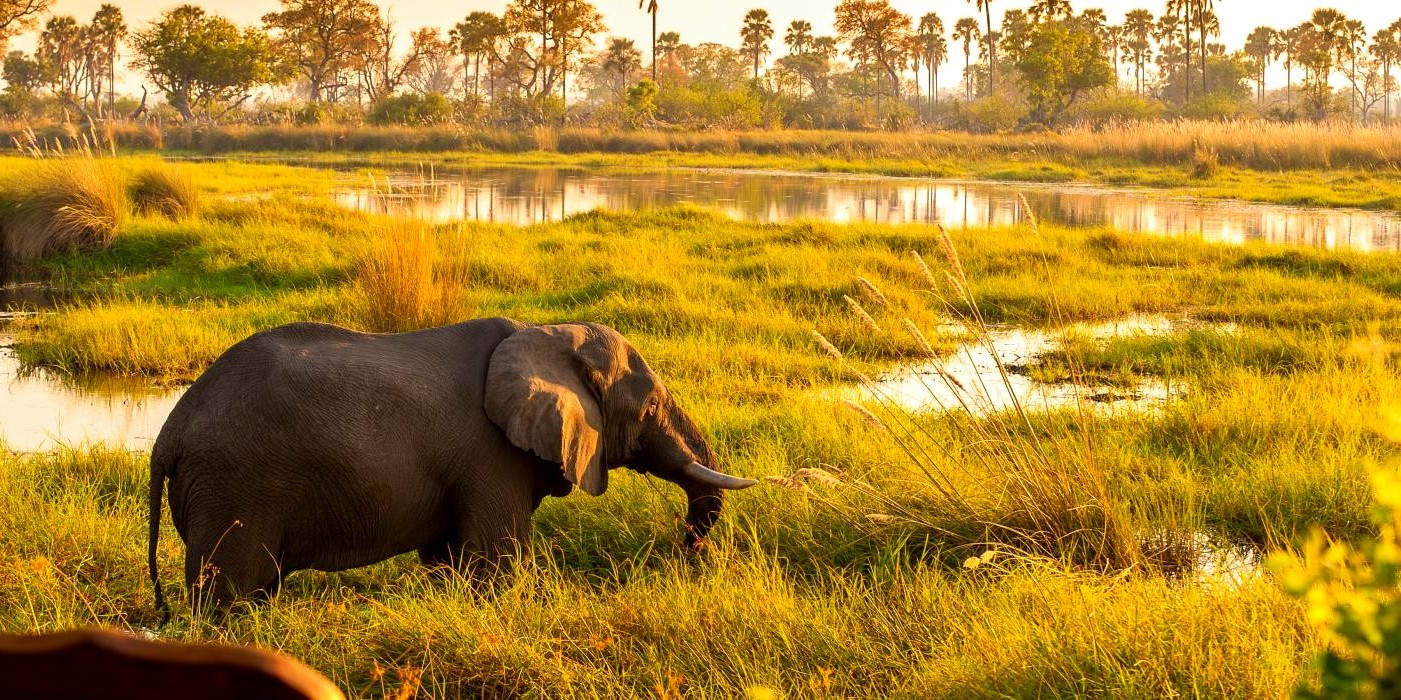
Highlights of a Wildlife Safari in Chitwan National Park
Elephant-Back Safari
-
Experience: Riding atop an elephant through the dense grasslands offers a unique vantage point for spotting wildlife, including the elusive Bengal tiger.
-
Wildlife Sightings: Elephants can access areas that are difficult to reach by vehicle, increasing your chances of spotting rhinos, deer, and other wildlife.
Jeep Safari
-
Experience: Travel deeper into the heart of the jungle in a 4x4 vehicle, which provides a comfortable and extensive tour of the park.
-
Wildlife Sightings: Jeep safaris are great for covering large areas, enhancing your chances to see a wide variety of animals, from wild elephants to leopards, and numerous bird species.
Canoe Rides
-
Experience: Glide down the Rapti or Narayani rivers in a traditional dugout canoe, a peaceful way to observe the park’s rich aquatic life.
-
Wildlife Sightings: Canoe rides are excellent for spotting crocodiles sunbathing on the banks and a variety of birds, including the endangered gharial crocodile.
Bird Watching
-
Experience: Chitwan is a haven for bird enthusiasts, with more than 540 species of birds, making it one of the best bird-watching destinations in Asia.
-
Species to Spot: Keep your eyes peeled for the Bengal florican, hornbills, red-headed trogons, and many others.
Nature Walks and Cultural Tours
-
Experience: Accompanied by experienced naturalists, explore the park on foot, learning about the flora and fauna. Visit local Tharu villages for a glimpse of traditional life.
-
Insights: Nature walks provide an intimate experience of the smaller ecological details, while cultural tours enrich your understanding of the local community and their customs.
Visit the Elephant Breeding Center
-
Experience: Learn about the efforts in elephant conservation and meet baby elephants.
-
Conservation Efforts: Understand the importance of conservation efforts and the role of elephants in the ecosystem of Chitwan.
With Relax Getaways, your wildlife safari in Chitwan National Park will be a remarkable journey through one of the richest wildlife habitats in Asia. This adventure is not just a highlight of Nepal Wildlife Safaris but a critical experience for anyone interested in wildlife and conservation.
Spiritual Journey to Lumbini
Embark on a profound spiritual journey to Lumbini, the birthplace of Lord Buddha, with Relax Getaways. This sacred site, recognized as a UNESCO World Heritage Site, holds immense spiritual significance not only for Buddhists but for anyone seeking peace and contemplation. Located in the Terai plains of southern Nepal, Lumbini is more than just a historical site; it's a place of deep spiritual energy and tranquility.
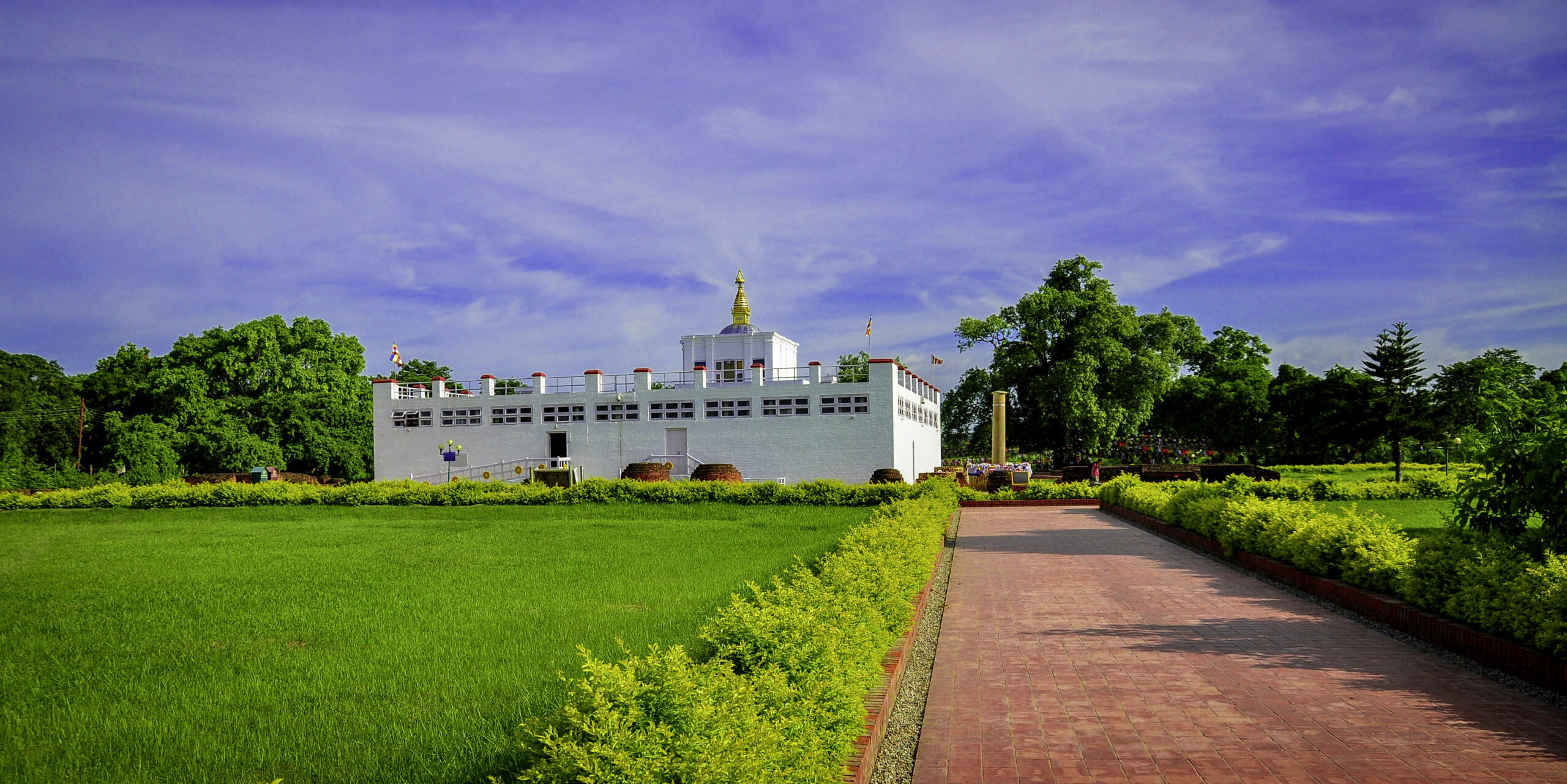
Highlights of a Spiritual Journey to Lumbini
Maya Devi Temple
-
Experience: Explore the ancient temple that marks the precise spot where Queen Maya Devi gave birth to Siddhartha Gautama, who later became the Buddha.
-
Significance: The temple houses the marker stone, the nativity sculpture, and the sacred pond—Puskarni—where it's believed Maya Devi took a bath before giving birth.
Monastic Zone
-
Experience: The eastern and western monastic zones of Lumbini are separated for Theravadin and Mahayana/Vajrayana monasteries from around the world. Wander through various national and international monasteries, each showcasing unique architectural styles.
-
Significance: These monasteries represent global Buddhist traditions and offer a peaceful space for meditation and reflection.
Lumbini Museum
-
Experience: Visit the Lumbini Museum to view ancient relics, religious manuscripts, and items related to different phases of Buddha’s life.
-
Significance: The museum provides deeper insights into the historical and cultural contexts of Buddha’s teachings and life in ancient Nepal.
The Eternal Peace Flame
-
Experience: Witness the Eternal Peace Flame, which burns continuously, symbolizing the eternal message of peace and unity preached by Buddha.
-
Significance: Located in the center of Lumbini, the flame is a potent reminder of the enduring influence of Buddha's message of peace.
Meditation and Retreat Centers
-
Experience: Participate in meditation sessions or spiritual retreats available throughout the year, facilitated by seasoned practitioners.
-
Significance: These sessions offer a chance to delve deep into mindfulness and spiritual practices in a serene setting.
World Peace Pagoda
-
Experience: Built by the Japanese Buddhist Nipponzan Myohoji Order, the pagoda stands as a symbol of peace and a magnificent structure to behold.
-
Significance: It enhances the spiritual ambiance of Lumbini and offers a panoramic view of the entire area.
Lumbini is not just a destination; it's an experience that invites you to connect with the spiritual teachings that have shaped millions of lives across the globe. Whether you are a devout Buddhist or a seeker of peace, a spiritual journey to Lumbini with Relax Getaways promises a profound insight into the roots of Buddhist philosophy and a deeper understanding of peace and mindfulness.
Scenic Mountain Flights
Experience the majestic Himalayas like never before with a scenic mountain flight in Nepal, one of the most exhilarating Top Nepal Adventures offered by Relax Getaways. These flights provide a unique opportunity to witness the grandeur of the world’s highest peaks from a bird’s eye view, making it a must-have experience on your Nepal Travel Bucket List.
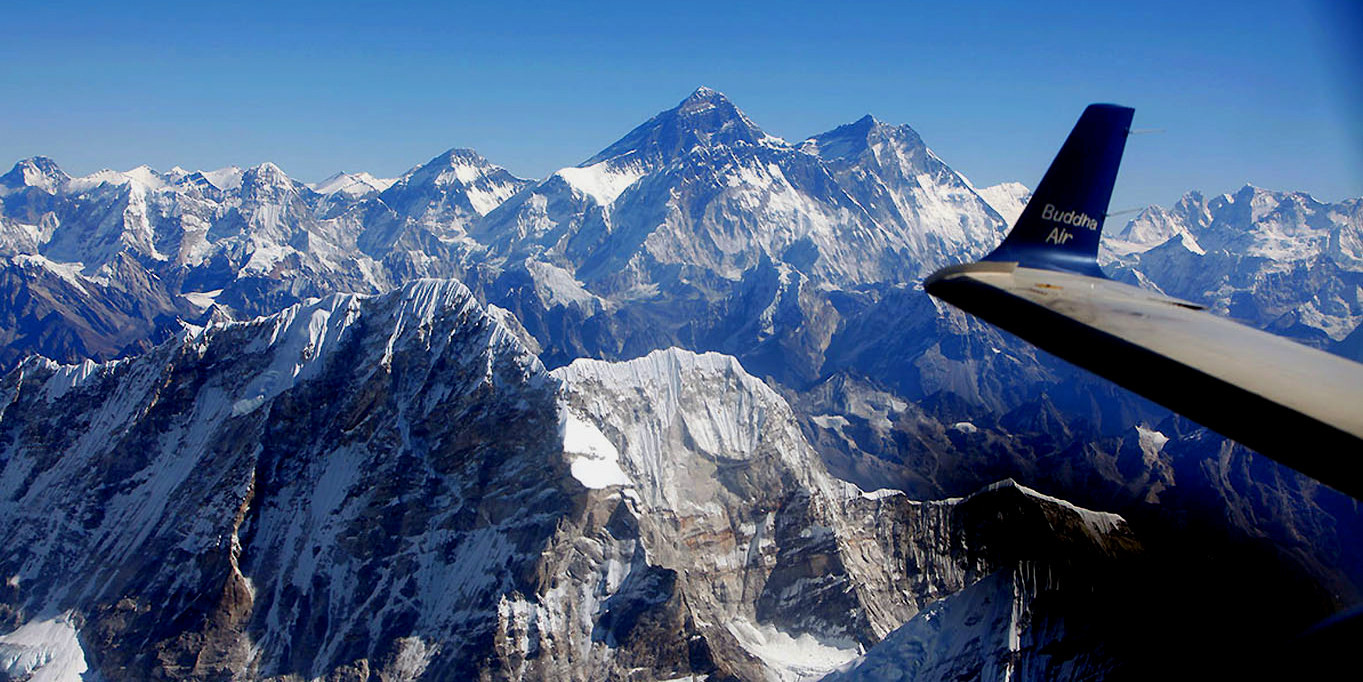
Highlights of Scenic Mountain Flights
Breathtaking Aerial Views
-
Experience: Fly close to some of the highest peaks in the world, including Mount Everest, Lhotse, and Makalu, among others.
-
Significance: These flights offer an unparalleled perspective of the Himalayan range, showcasing its vast scale and the sheer beauty of its snow-capped peaks.
Ease and Accessibility
-
Experience: Enjoy the spectacular views without the physical demands of trekking. It’s an excellent option for those who have limited time in Nepal or prefer not to undertake high-altitude hikes.
-
Significance: Mountain flights democratize the experience of seeing the world’s highest peaks, making them accessible to all age groups and fitness levels.
Educational Commentary
-
Experience: Pilots provide commentary during the flight, pointing out significant landmarks and peaks. Some flights also allow passengers to visit the cockpit for an unobstructed view.
-
Significance: The informative commentary enhances the experience by offering insights into the geography and cultural significance of the Himalayan region.
Photography Opportunities
-
Experience: Capture stunning aerial photos of the Himalayas, a dream for professional and amateur photographers alike.
-
Significance: These unique images are a fantastic addition to any travel collection, capturing the awe-inspiring beauty of the mountains.
Memorable Experience
-
Experience: A mountain flight is an unforgettable way to experience the magnificence of Nepal’s natural wonders.
-
Significance: For many, this is a once-in-a-lifetime experience that provides lasting memories of the Himalayan panorama.
Embark on a scenic mountain flight with Relax Getaways, and add an extraordinary chapter to your Ultimate Nepal Travel Guide. Witness the awe-inspiring splendor of the Himalayas from above and carry home memories that will last a lifetime. This experience is indeed one of the Must-Do Experiences in Nepal, perfect for anyone who wants to behold the breathtaking beauty of the mountains without the trek.
Participate in Local Festivals
Participating in local festivals is a vibrant and enriching way to experience the cultural heart of Nepal. With Relax Getaways, immerse yourself in the traditions, colors, and celebrations that define Nepali life. Each festival offers unique insights into the history, spirituality, and community spirit of the Nepalese people, making it a significant Must-Do Experience in Nepal.
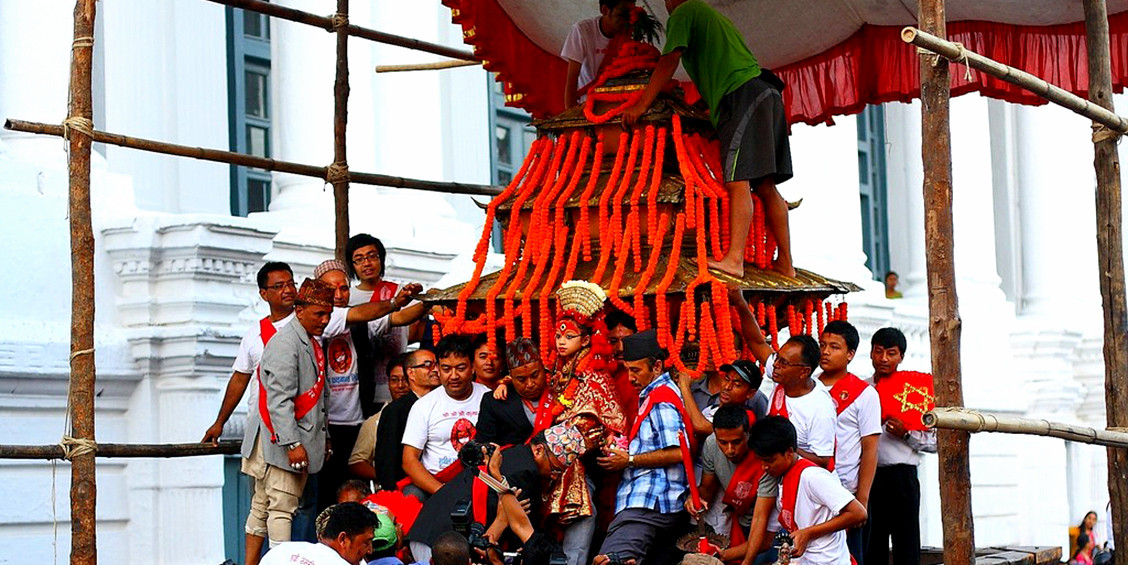
Key Festivals to Participate in Nepal
Indra Jatra
-
Experience: Celebrated in Kathmandu, Indra Jatra marks the end of the monsoon season. It features processions, traditional dances, and the erection of the Yosin, a ceremonial pole, followed by the Kumari Jatra, where the living goddess Kumari is paraded around the city in a chariot.
-
Significance: This festival honors Indra, the king of heaven and the god of rain, and is a time for thanking him for the rain and praying for good harvests.
Tihar (Festival of Lights)
-
Experience: Known as the second biggest Nepali festival after Dashain, Tihar is celebrated over five days and involves the worship of various animals such as crows, dogs, and cows, culminating with Bhai Tika, where sisters pray for their brothers' long life.
-
Significance: Tihar is a celebration of lights, with homes decorated with oil lamps, candles, and colorful rangolis, symbolizing the victory of light over darkness and good over evil.
Dashain
-
Experience: This is the longest and the most significant festival in Nepal, celebrated by Nepalese of all castes throughout the country. The festival lasts for 15 days, filled with prayers, animal sacrifices, family gatherings, and blessings for prosperity.
-
Significance: Dashain honors the goddess Durga and celebrates her victory over evil forces. It's a time for family reunions, exchange of gifts and blessings, and elaborate pujas.
Holi (Festival of Colors):
-
Experience: Celebrated in March, Holi is marked by throwing colored powder and water at friends and family in a lively, cheerful atmosphere. The festival also includes singing, dancing, and the consumption of festive foods and drinks.
-
Significance: Holi commemorates the arrival of spring and the victory of good over evil, fostering a spirit of forgiveness, friendship, and reconciliation
Lhosar (Tibetan New Year)
-
Experience: Observed by the Sherpa, Tamang, and Tibetan communities of Nepal, Lhosar involves traditional music, dance, and elaborate costumes. Houses are cleaned and beautifully decorated, symbolizing a fresh start.
-
Significance: Lhosar marks the beginning of the new year according to the lunar calendar and is a time for families to come together and celebrate with traditional customs and rituals.
Participating in local festivals with Relax Getaways offers a unique opportunity to dive deep into Nepal’s cultural heritage. It’s an experience that connects you with the soul of Nepali culture, creating memories that last a lifetime and making it a true highlight of your Nepal Travel Bucket List.
River Rafting
Experience the thrill of river rafting in Nepal, a premier destination for adventurous water sports. With its fast-flowing rivers and spectacular mountain backdrops, Nepal offers some of the best white-water rafting experiences in the world. Relax Getaways invites you to navigate the untamed waters of the Nepalese rivers, providing an exhilarating addition to your Nepal Adventure Travel.
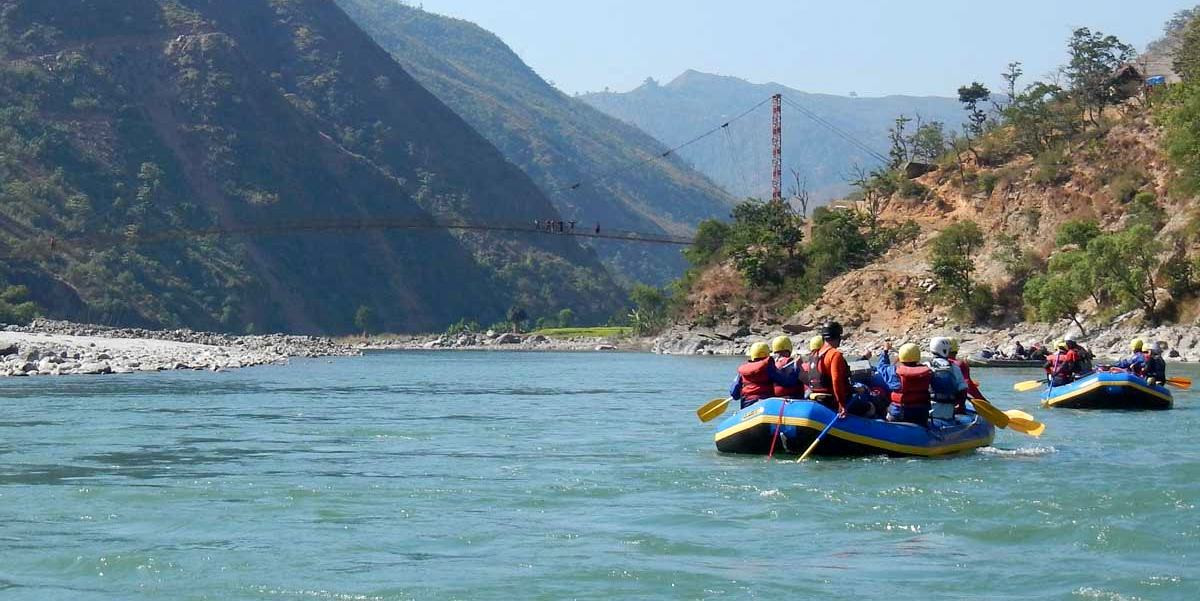
Top Rivers for Rafting in Nepal
Trishuli River
-
Difficulty: Moderate (Class III-IV rapids)
-
Duration: Day trips or up to 3 days
-
Highlights: Convenient location between Kathmandu and Pokhara, making it perfect for a quick adventure. The river features exciting rapids like "Ladies Delight," "Upset," and "Surprise."
Bhote Koshi River:
-
Difficulty: Advanced (Class IV-V rapids)
-
Duration: 1-2 days
-
Highlights: Located close to Kathmandu, offering some of the most challenging rapids in Nepal. The steep and continuous mountain stream tests your rafting skills.
Kali Gandaki River:
-
Difficulty: Moderate to difficult (Class III-IV rapids)
-
Duration: 3 days
-
Highlights: Raft through deep gorges, subtropical forests, and remote villages, accompanied by views of the Annapurna range. The river is named after the goddess Kali and offers a mix of exhilarating rapids and calm stretches.
Seti River
-
Difficulty: Moderate (Class II-III rapids)
-
Duration: 2 days
-
Highlights: Ideal for beginners and families, featuring gentle rapids with plenty of opportunities to swim and enjoy the scenery. The warm waters and picturesque landscapes make it a pleasant rafting experience.
Sun Koshi River:
-
Difficulty: Moderate to difficult (Class III-IV rapids)
-
Duration: 7-9 days
-
Highlights: Known as the "River of Gold," it is one of the top ten rafting journeys in the world. The trip takes you through lush forests, high cliffs, and remote villages, offering a longer and more immersive rafting adventure.
Join Relax Getaways for a river rafting adventure in Nepal, and experience the rush and beauty of the Himalayan rivers. Whether you’re a seasoned rafter or a first-timer, these trips promise unforgettable excitement and fun, firmly placing them on your Nepal Travel Bucket List.
Health and Safety for Ultimate Bucket List Experiences in Nepal
When planning your ultimate bucket list experiences in Nepal with Relax Getaways, it's crucial to prioritize health and safety. The diverse terrain and varying climates of Nepal, coupled with adventurous activities, can pose unique challenges. Here are essential health and safety tips to ensure a safe and enjoyable trip:
General Health and Safety Tips
Vaccinations and Health Precautions
-
Ensure you are up-to-date with routine vaccines, including measles-mumps-rubella (MMR), diphtheria-tetanus-pertussis, varicella (chickenpox), polio, and your yearly flu shot.
-
Consider vaccinations for Hepatitis A and Typhoid, which can be contracted through contaminated food or water in Nepal.
-
If visiting rural areas or going on treks, a rabies vaccine might be recommended due to the risk of animal bites.
Altitude Sickness Prevention
-
Many of Nepal's trekking destinations, including the trek to Everest Base Camp, involve high altitudes. It's essential to acclimatize properly to avoid altitude sickness.
-
Ascend gradually and allow several days for acclimatization. Avoid alcohol, sleeping pills, and smoking at high altitudes.
-
Stay hydrated and informed about the symptoms of altitude sickness, which include headaches, nausea, and dizziness.
Travel Insurance
-
Ensure you have comprehensive travel insurance that covers all your planned activities, especially trekking, rafting, and other high-adventure sports.
-
Check if your insurance covers emergency helicopter evacuation and medical treatment, which is vital for remote or high-altitude activities.
Food and Water Safety
-
Drink only bottled or boiled water, avoid tap water, and use bottled water even for brushing your teeth.
-
Eat foods that are cooked and served hot. Avoid raw vegetables and salads unless you can peel them yourself.
-
Be cautious with street food, which can be tempting but also risky if hygiene standards are not maintained.
Safety Tips for Specific Activities
Trekking Safety
-
Always trek with a guide or in a group. Nepal's trails can be complex, and having a knowledgeable guide is invaluable for safety and navigation.
-
Inform someone of your trekking route and expected return date.
-
Wear appropriate trekking gear, including sturdy boots, thermal layers, and a waterproof jacket.
Cultural Etiquette and Safety
-
Respect local customs and dress modestly, especially when visiting temples and other religious sites.
-
Ask for permission before taking photographs of local people or religious ceremonies.
Wildlife Safari Precautions
-
Follow all guidelines and instructions provided by your guide during wildlife safaris in parks like Chitwan National Park.
-
Maintain a safe distance from animals, and never attempt to feed them.
Emergency Preparedness
-
Carry a basic first-aid kit equipped with essentials like bandages, antiseptics, and medicines for common ailments.
-
Keep important local contact numbers handy, including those of your guide, local emergency services, and the nearest embassy or consulate.
By adhering to these health and safety guidelines, you can enjoy a memorable and secure visit to Nepal with Relax Getaways. Each adventure and experience is designed to not only thrill but also ensure your utmost safety and comfort, making your trip to Nepal a worry-free and exhilarating journey.
Tips for Ultimate Bucket List Experiences in Nepal
Embarking on your ultimate bucket list experiences in Nepal can be an adventure of a lifetime. Whether you're trekking through the Himalayas, exploring ancient temples, or engaging in adrenaline-pumping activities, proper preparation can make your journey both enjoyable and safe. Here are essential tips to enhance your experience in Nepal:
-
Plan Your Itinerary Carefully: Research and plan your activities according to your interests and physical capabilities. Consider the season, as weather can significantly impact your experience in Nepal. For example, trekking is best during the pre-monsoon (March to May) or post-monsoon (September to November) periods.
-
Acclimate to the Altitude: High-altitude destinations like Everest Base Camp require acclimatization to prevent altitude sickness. Plan gradual ascents, stay hydrated, and take it easy for the first few days to adjust to the altitude.
-
Hire Local Guides: Employing local guides not only enhances your experience by providing insights into the local culture and landscapes but also supports the local economy. Guides can ensure that you take the safest routes and adhere to cultural norms.
-
Respect Local Culture and Traditions: Nepal is rich in cultural traditions and religious beliefs. Dress modestly, especially when visiting temples and monasteries. Always ask permission before photographing people or religious ceremonies.
-
Stay Healthy: Pay attention to what you eat and drink. Stick to bottled or treated water and avoid raw vegetables and pre-cut fruits. Ensure you are vaccinated as recommended by health professionals before your trip.
-
Pack Appropriately: Depending on your activities, pack gear that suits various conditions. For trekking, bring layers of clothing, a good pair of boots, and necessary gear like sleeping bags and walking poles. Don’t forget a first-aid kit.
-
Get Comprehensive Travel Insurance: Ensure your travel insurance covers emergency evacuation and medical expenses. This is crucial for adventure activities and high-altitude trekking in Nepal.
-
Learn Basic Nepali Phrases: Knowing simple phrases in Nepali can enhance your interaction with local people and show respect for their language and culture.
-
Stay Connected: Although many remote areas in Nepal have limited connectivity, it’s wise to carry a local SIM card for areas with coverage. Satellite phones or GPS devices are recommended for remote trekking areas.
-
Be Mindful of Environmental Impact: Practice “Leave No Trace” principles to minimize your footprint. Dispose of waste properly and respect wildlife and natural habitats.
-
Participate in Local Festivals: If your visit coincides with local festivals, don’t miss out on the opportunity to participate. Festivals like Dashain, Tihar, or Holi offer unique cultural experiences.
-
Prepare Financially: While many places in urban areas accept cards, cash is essential in remote areas. Ensure you have access to local currency, especially when traveling off the beaten path.
By following these tips, your journey through Nepal with Relax Getaways will be not just a visit, but a profound engagement with the land and its people. Each experience, from the heights of the mountains to the spiritual tranquility of its sacred sites, will contribute to a truly unforgettable adventure.
Best Time for Ultimate Bucket List Experiences in Nepal
Choosing the right time to visit Nepal is crucial for maximizing your experience, especially if you're planning to tick off some ultimate bucket list adventures. Nepal's climate varies significantly depending on the altitude, but generally, there are two prime seasons for tourists seeking outdoor activities and cultural experiences: pre-monsoon (spring) and post-monsoon (autumn).
Pre-Monsoon (Spring: March to May)
-
Weather: The weather is comfortably warm at lower and moderate at higher elevations, making it ideal for trekking.
-
Visibility: This season offers excellent visibility before the monsoon clouds cloak the peaks. The skies are generally clear, providing spectacular mountain views.
-
Nature: Spring is also the time when flowers, especially rhododendrons, the national flower of Nepal, are in full bloom, adding a splash of color to the mountainsides.
Post-Monsoon (Autumn: September to November)
-
Weather: Post-monsoon weather is generally stable and dry, with clear skies and temperate conditions, ideal for trekking.
-
Visibility: Excellent visibility returns as the monsoon dust settles and the air becomes crisp and clear.
-
Cultural Festivals: Autumn coincides with some of Nepal’s most important festivals, including Dashain and Tihar, providing visitors with a rich cultural experience.
Off-Peak Seasons
-
Monsoon (June to early September): The monsoon season is less ideal for trekking due to rain, mud, and possible leeches on the lower trails. However, the rain brings lush greenery to the valleys and hills, and it is a good time for cultural tours in the cities where rain usually comes in short bursts and is less disruptive.
-
Winter (December to February): Winter can be icy, especially at higher elevations, but it's a great time for cultural tours in the lower regions of Nepal. The skies are usually clear, and tourist sites are less crowded.
Specific Activities
-
Trekking: Best in autumn and spring when the weather is stable and visibility is good.
-
Wildlife Safaris: Visit during the dry months, particularly from February to May, when animals are more likely to be seen near water sources.
-
Festivals: For cultural experiences, aim to visit during major festivals. Autumn festivals like Dashain and Tihar or the spring festival of Holi can provide deeper insights into Nepali culture.
-
Mountain Biking and Rafting: These activities can be enjoyed in spring and autumn, but rafting is best just after the monsoon when the rivers are full and challenging.
Planning your visit during these optimal times will ensure that you have the most enjoyable and fulfilling experience possible, whether you're hiking up to Everest Base Camp, exploring the rich cultural tapestry of Kathmandu Valley, or embarking on a jungle safari in Chitwan National Park.
Ultimate Bucket List Experiences in Nepal, it's evident that this captivating country offers a unique blend of adventure, culture, and natural beauty. From the soaring peaks of the Himalayas to the spiritual tranquility of Lumbin, each experience with Relax Getaways is crafted to be memorable and enriching. We invite you to explore the diverse landscapes and rich heritage of Nepal with us, where every moment promises discoveries and lasting impressions. Join us for an adventure that transcends the ordinary, right here in the heart of the Himalayas.
FAQs for Ultimate Bucket List Experiences in Nepal
Q: What is the best time to visit Nepal for bucket list experiences?
A: The ideal times to visit are during the spring (March to May) and autumn (September to November). These seasons offer stable weather and clear skies, perfect for trekking and cultural experiences.
Q: Do I need any special permits for trekking in Nepal?
A: Yes, trekking in Nepal requires permits such as the TIMS (Trekkers' Information Management System) card and National Park permits, depending on the trekking area. Relax Getaways can handle all necessary permits for you.
Q: What should I pack for a trekking trip in Nepal?
A: Essential items include sturdy trekking boots, layers of breathable clothing, a waterproof jacket, a sleeping bag suitable for cold temperatures, a first-aid kit, a water purification system, and sunscreen. Also, bring a durable backpack and trekking poles.
Q: Is travel insurance necessary for Nepal?
A: Absolutely. Ensure your insurance covers high-altitude trekking and emergency medical evacuation, especially for high-adventure activities like trekking or rafting.
Q: How can I ensure my safety during adventure activities?
A: Always adhere to guidelines provided by experienced guides. Relax Getaways ensures that all activities are led by qualified professionals and that all safety measures are strictly followed.
Q: Can I participate in local festivals during my visit?
A: Yes, participating in local festivals can enhance your visit. Check the festival dates, which often vary each year based on the lunar calendar. Relax Getaways can align your visit with major cultural events.
Q: How do I deal with altitude sickness?
A: Prevent altitude sickness by ascending gradually, staying hydrated, avoiding alcohol, and recognizing altitude sickness symptoms. Spend a few days at moderate elevation before reaching higher altitudes.
Q: What are the options for vegetarians and those with dietary restrictions?
A: Nepali cuisine includes many vegetarian options. Inform your guide about any dietary restrictions or allergies in advance to accommodate your needs.
Q: How much physical fitness is required for trekking in Nepal?
A: The required fitness level depends on the trek. Short, lower-altitude treks require moderate fitness, while more challenging treks like Everest Base Camp or Annapurna Circuit require good physical fitness.
Q: Are there opportunities for wildlife photography during safaris?
A: Yes, Nepal's wildlife reserves like Chitwan and Bardia are excellent for wildlife photography, offering chances to capture images of endangered species like the rhinoceros and the Royal Bengal tiger.
For the Nepal tour, please click here.
If you are looking for different kinds of Nepal Tours or Trekking Packages, feel free to contact us.
